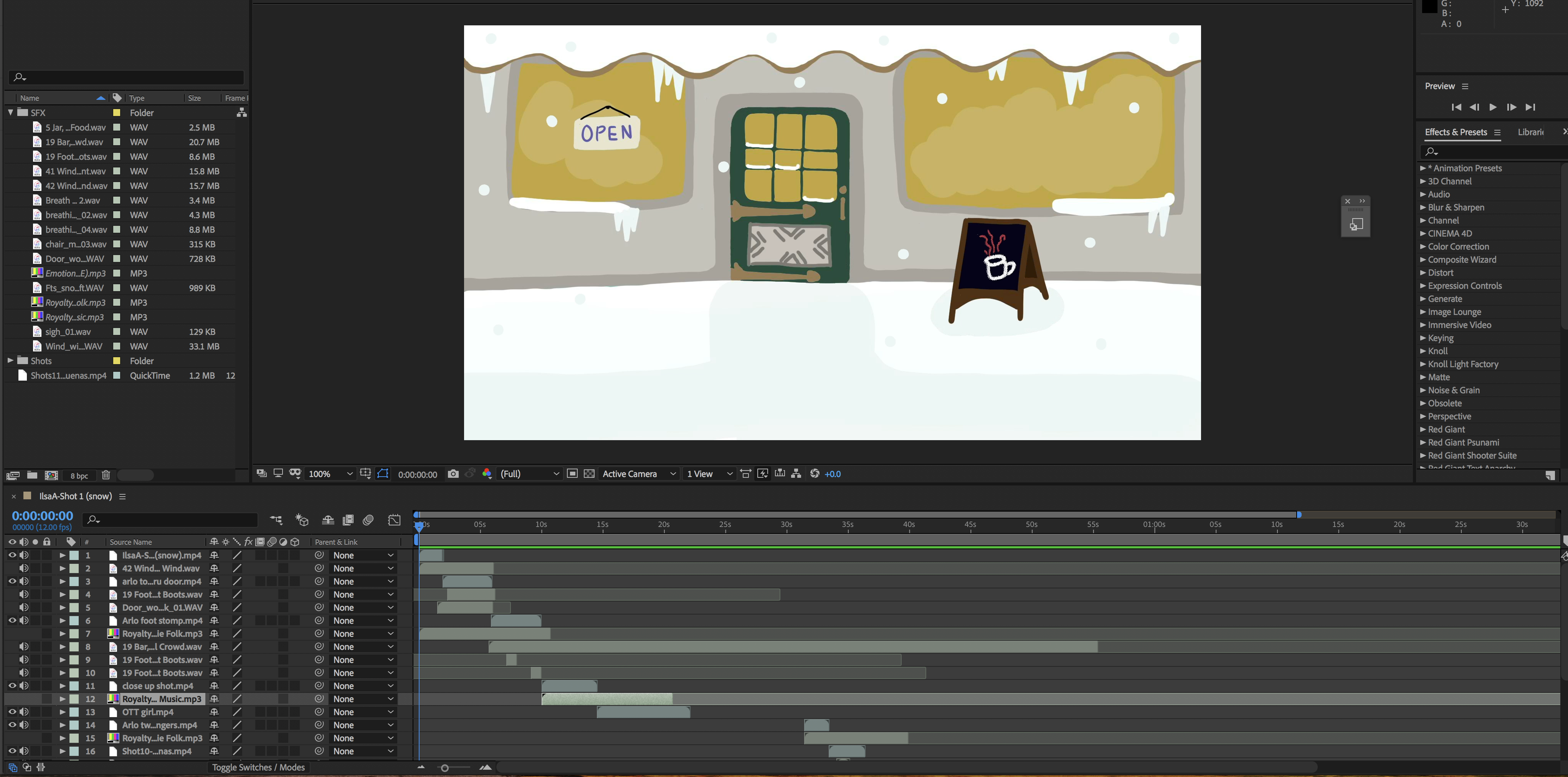Introduction
Story
Sonata
The man stood at the gate, wind blowing past him, ruffling his dark, unkempt hair. He had a paled, gaunt face, dust surrounding his red rimmed eyes, darting about in an odd manner. His dark coat flapped in the wind, and although the sun radiated brilliance, the atmosphere was oppressive. Pulsing. From beyond the gate, he noted somberly. He took a step towards the fence, pausing a moment, hesitating. He grasped the grimy iron gate, clenching it with his right hand. It was moist, mossy, but the man hardly noticed what with the sweat coming out of his own palms. He stared through the bars, gazing at the large estate beyond them. What had brought him here, he did not know. All he did know is that he felt like a puppet, with somebody pulling all of his strings in one direction. Towards that manor.
He breathed deeply, closing his eyes as he did so. The air filled his lungs, filling him with resolve. He opened his eyes.
He pulled.
The door opened with a squeak, providing very little resistance to the hand that tugged on it. And after a sharp intake of air, he stepped into the courtyard.
Immediately, he was surrounded by a fog, one so thick and so very gray he could only see a few steps in front of him. The sun vanished, suffocated by the mist. Squinting, he found that he stood on a rocky path. From what he could see with his newly inhibited vision, it was surrounded by patches of dying, yellowing grass. Weeds corrupted the path, slipping into the cracks, beckoning him forward, sinisterly. He began to walk.
Every step he took, almost rhythmic, thudded on the ground. He advanced slowly but surely, mindlessly, eyes set on the large building looming ahead of him.
Everything in the courtyard was either dead or dying. Except for him, of course. At least, that’s what he thought.
Flowers, bushes, hedges, trees…. They leaned, twisting over, almost appearing to reach out towards him in frozen dismay. The only signs of movement came from him, and the ever so- persistent wind that rustled the corpses of the plants. No signs of animals, either. As far as he could see.
He kicked pebbles, dragging his feet unintentionally, thoughts blank, the fog entering his mind, saturating his head, causing it to become gray and fuzzy.
The manor called out to him, and he continued marching, up the corroded marble steps and through the entryway. Glass windows on the walls were cracked, covered with dirt and grime. Too filthy to peek into, and besides, it didn’t matter to him. He continued until he reached the great, old, oak doors.
This time, he pulled without hesitation.
He entered the house, appearing to be in a large room, with soft, crimson carpet, and dark wooden walls. Lined up along the walls were enormous staircases heading in all sorts of directions, doors and doors everywhere, hallways and corridors that seemed to twist and turn eternally. Beams of light intruded on the scene, coming from unknown sources, illuminating the dust dancing adrift. The air was musty, dense.
Right away, he heard it. The song that had been playing in the back of his mind that he hadn’t noticed up until now. Pianissimo.
In a trance-like state, he followed the sound of the piano, not aware of the motions of his body, mind completely fixated on that beautiful haunting melody.
He glided up the largest staircase, his ears picking up the song, leading him to believe it was coming from above. His hearing was his strength. He knew he could trust it. When he reached the top of the wooden staircase, he noticed it branched off into three different hallways. Without a moment’s pause, he kept center. He continued his pace, and kept walking until suddenly, he stopped. He listened. Third door to the right. He pulled on the old, golden knob on the dark oak door, and it opened, granting him passage. He stood in the doorway, marveling at how he knew these things. He didn’t question it. He just moved on. Mezzo forte. He traveled through corridors, door through door, not knowing or caring about where he was, simply following the repeating notes of the piano, they were beckoning him, calling him. Room after room, staircase after staircase, hallway after hallway, it never ended. He had some sort of connection with the chilling melody, something that resonated with him to his core. Could songs have such power? Should songs have such power? He pushed these thoughts aside. They didn’t matter. He took time to appreciate the beauty, the elegance of such a piece. He savored each note, yet continued searching, searching for the source. He danced as he walked, danced to such lovely rhythm.
It was then when he sensed it.
He was getting closer.
Exhilarated by the thought, he picked up the pace, walking more briskly than he had been before. The volume of the piano grew more clearer, more sharper than before. Fortissimo.
The pounding of the piano grew increasingly louder, pounding in his head, clapping like thunder. He grew more and more anxious, more desperate to find it, find the piano, find the piano. Follow the song, follow the song. He grew more and more agitated, breaking into a run, pushing through door after door.
Frantic, he broke through several rooms, tearing through them, trampling through upturned chairs and scattered furniture. Where was it? Where was it coming from? FIND IT, voices screamed with each pounding of the piano. FIND IT. The song was driving him crazy, making him delirious. Colors merged together as his vision blurred. Every pound of the piano seemed to make the ground shake. The shaking grew stronger with each passing minute.
He tripped, catching himself before falling to the ground. He panted, breathing heavily, his lungs burning with pain. He felt a stitch, like daggers in his side. Yet he staggered forward, not by choice, but because of the music. The music was driving him now, that sweet infernal music.
He reached a door. Same as the others, yet this one…
He yanked the door open. The music stopped.
He stood, rigid, in a large, empty ballroom, staring at the black, smooth surface of a grand piano, placed directly in the center, thick dust hovering around it, falling gently to the ground. Dusty, old, yet something appealing about the instrument.
Finally. What he had been searching for.
Swaying, he limped towards the beauty. He collapsed with a heavy thud, onto the velvet cushioned bench, lifting clouds of dust. He sat glumly, staring at the faded black and white keys.
It all clicked so clearly, all at once.
The reason why he was there. Why it had called for him. He sighed.
Then he began to play.
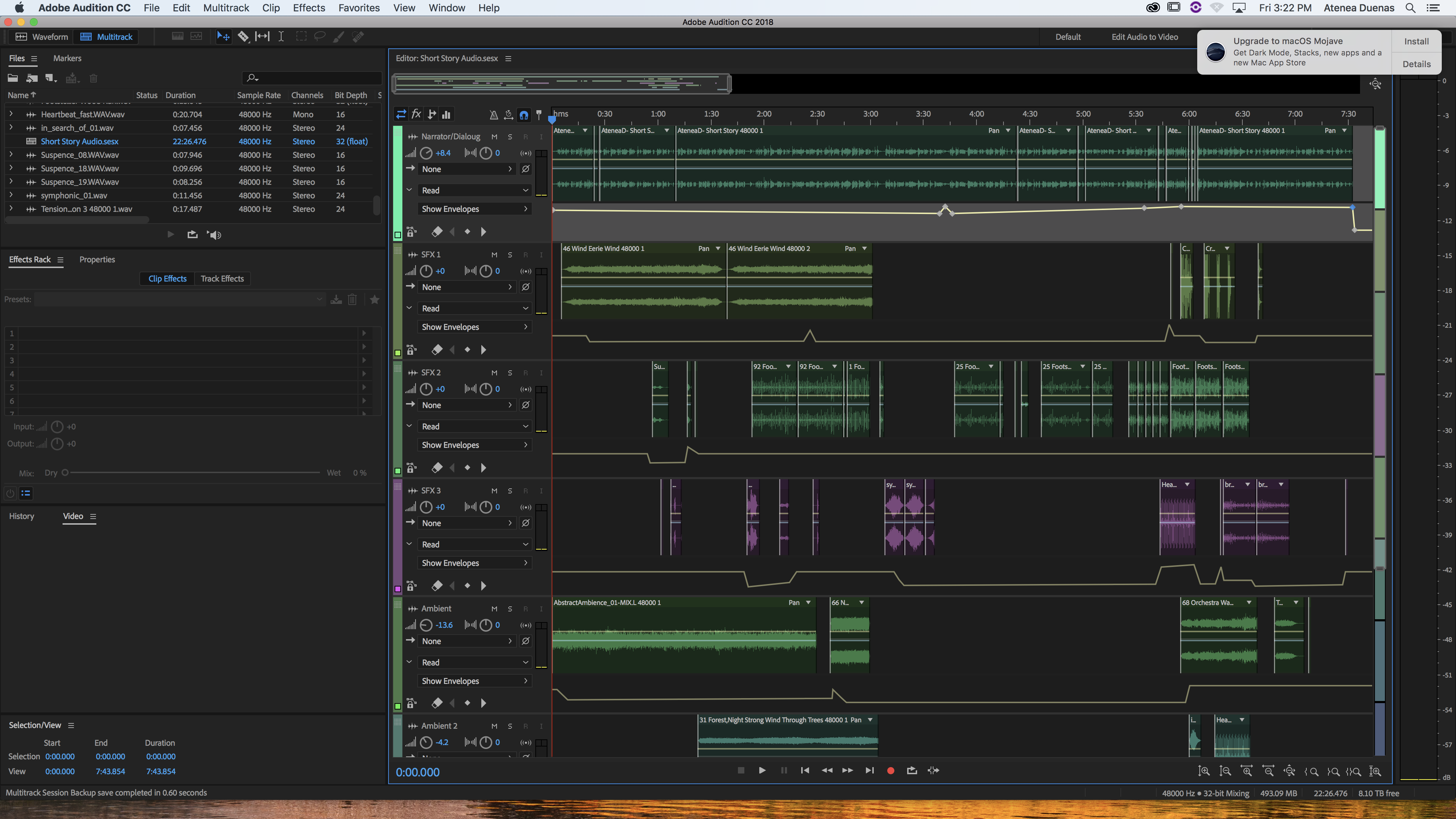
Illustrations
To create the illustrations on this page, I worked in Photoshop to digitally render some photos. The first was completely sketched in Photoshop, outlined and colored, while the last to started out as traditional sketches, and I photographed them and outlined them in Photoshop, coloring them using the software and adding a couple touches to them. The second was a file created in Adobe Illustrator that I edited in Photoshop. The first image is supposed to correlate to the introduction, where I wracked my mind for ideas, and found inspiration from my old stories and the story began to flood in.
Personal Illustration:
The class in Digital Media was assigned to create an illustration in Adobe Illustrator, with no other guidelines or rules other than that. While Illustrator is not my favorite tool for drawing, I found myself doodling this image below that I call “100 degrees Celsius”.
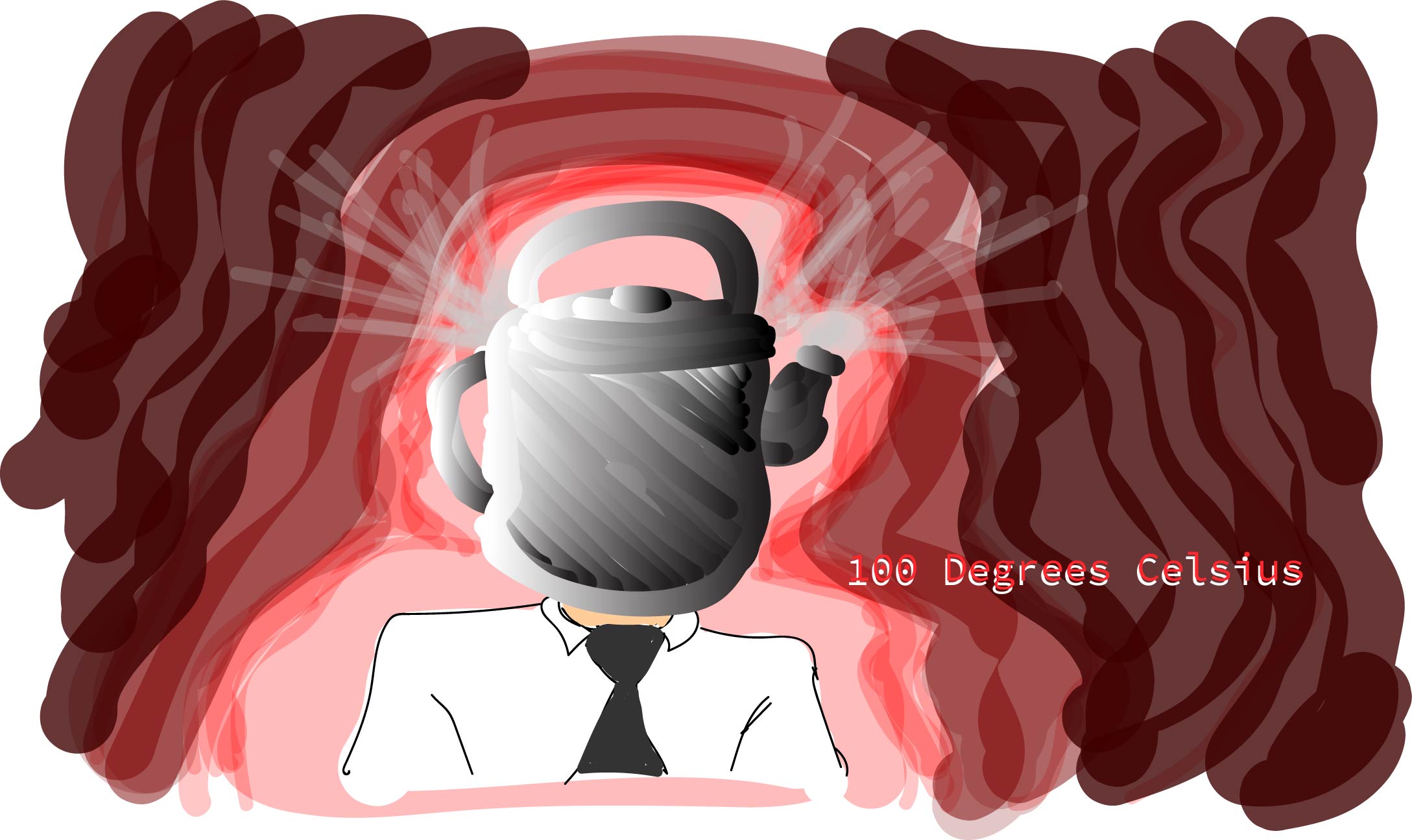
This was an interesting process for me, since I did not know what I was going to draw. I used an abandoned idea for an animated documentary we had to research, back in the recesses of my mind. It was going to be a sort of metaphorical manifestation of stress, and people represented by kettles on their heads. And when the heat get to be too much, they begin to boil, showing the effect stress can have on the brain, which is the sort of experience I have had. I like odd imagery, so a tea kettle head was pretty fun to draw as well.
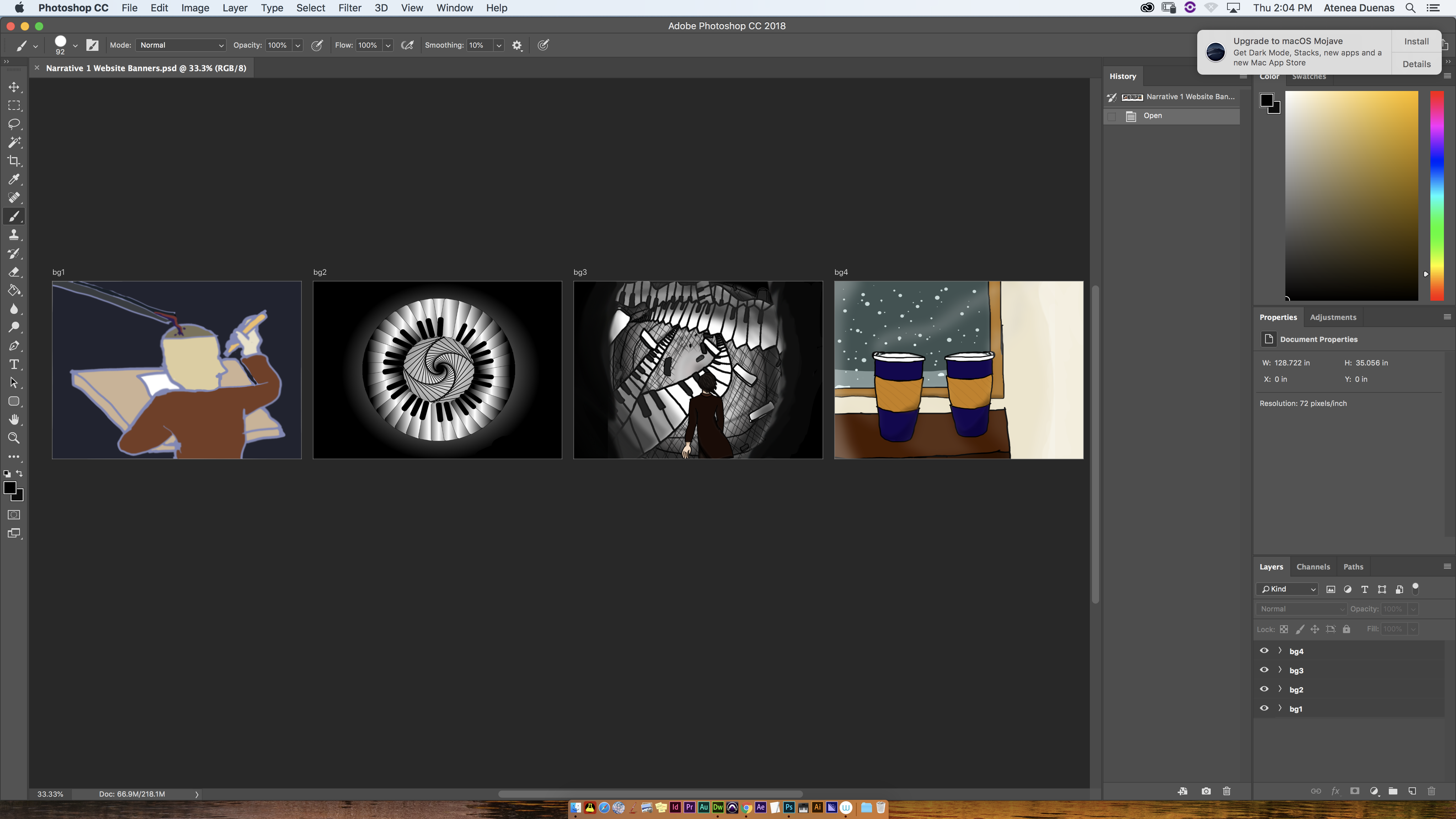
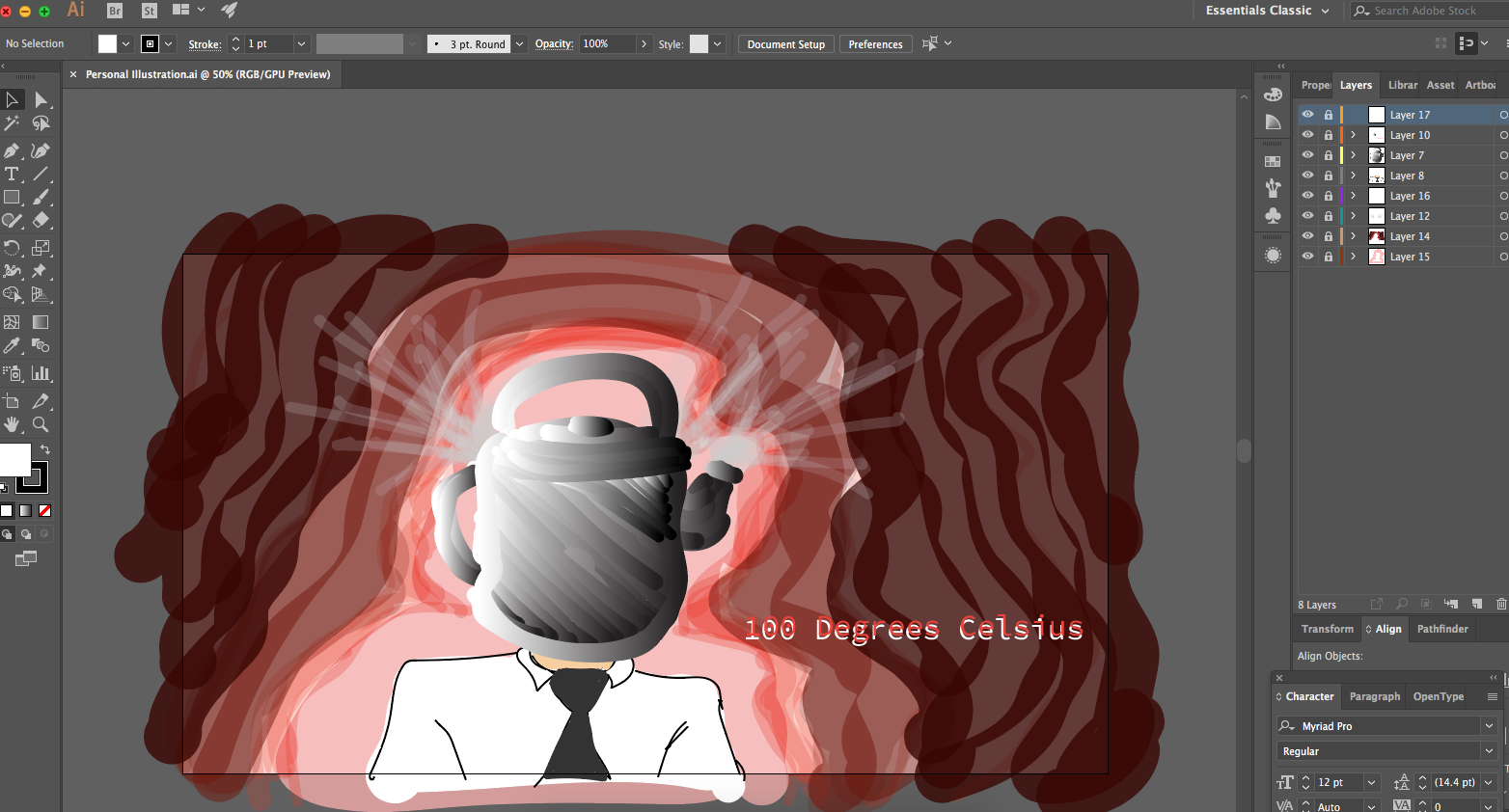
Animation Project
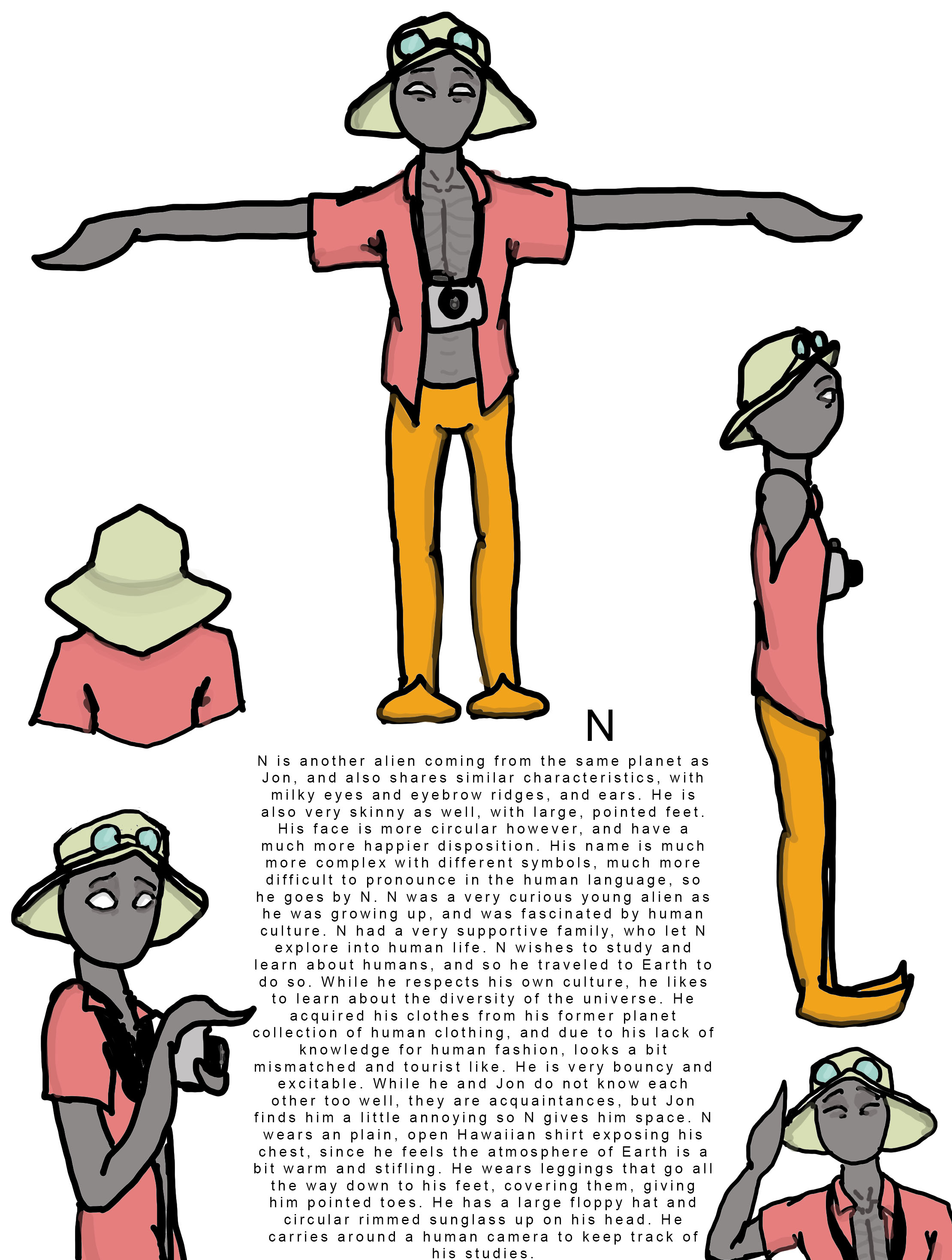
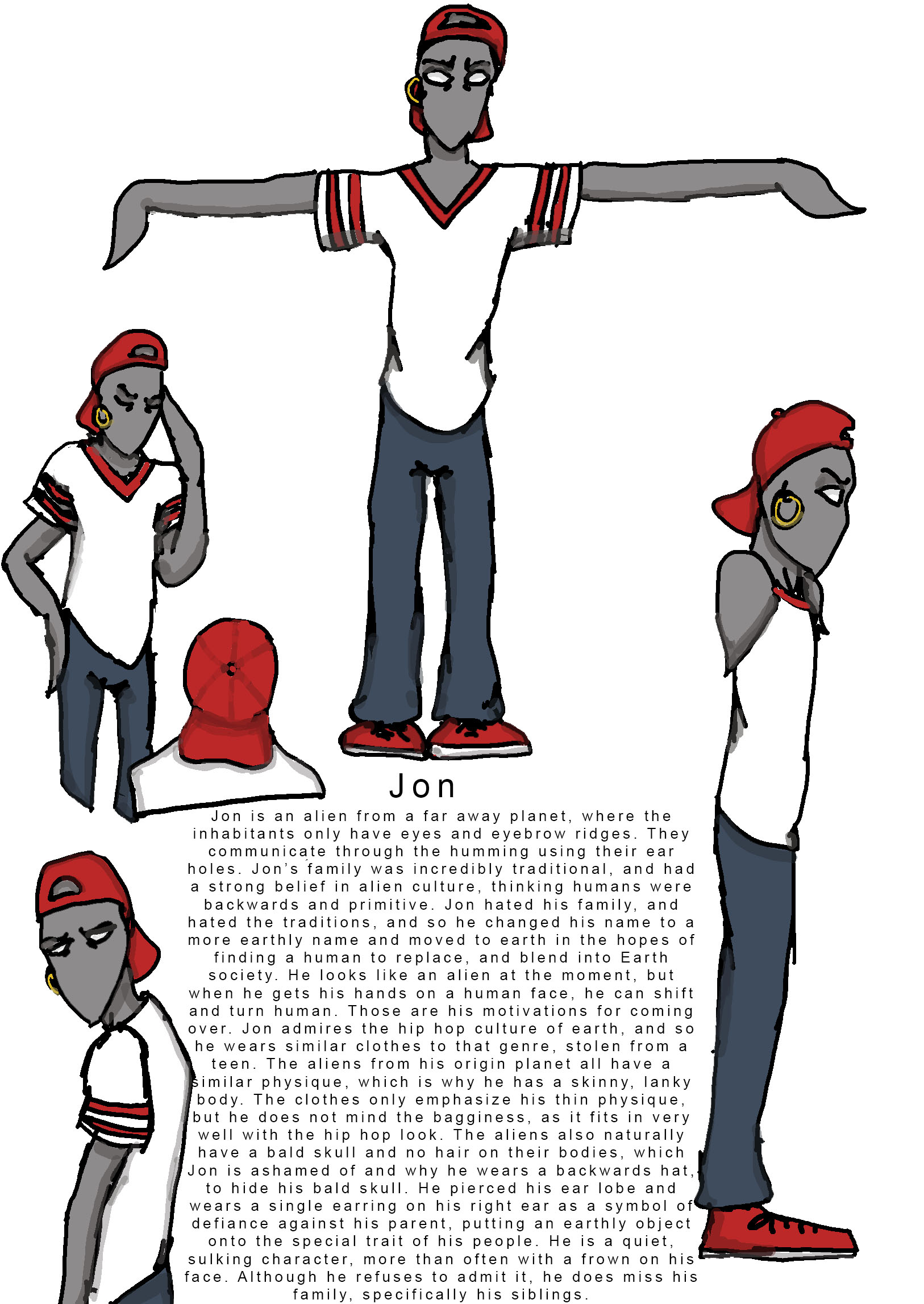
I thought it was fun to design characters, and I like to come up with personalities and backstories. It was a great opportunity to express my creativity and connect to characters that might appear on the set, and their reasons for traveling, which sort of led to the creation of their personalities.
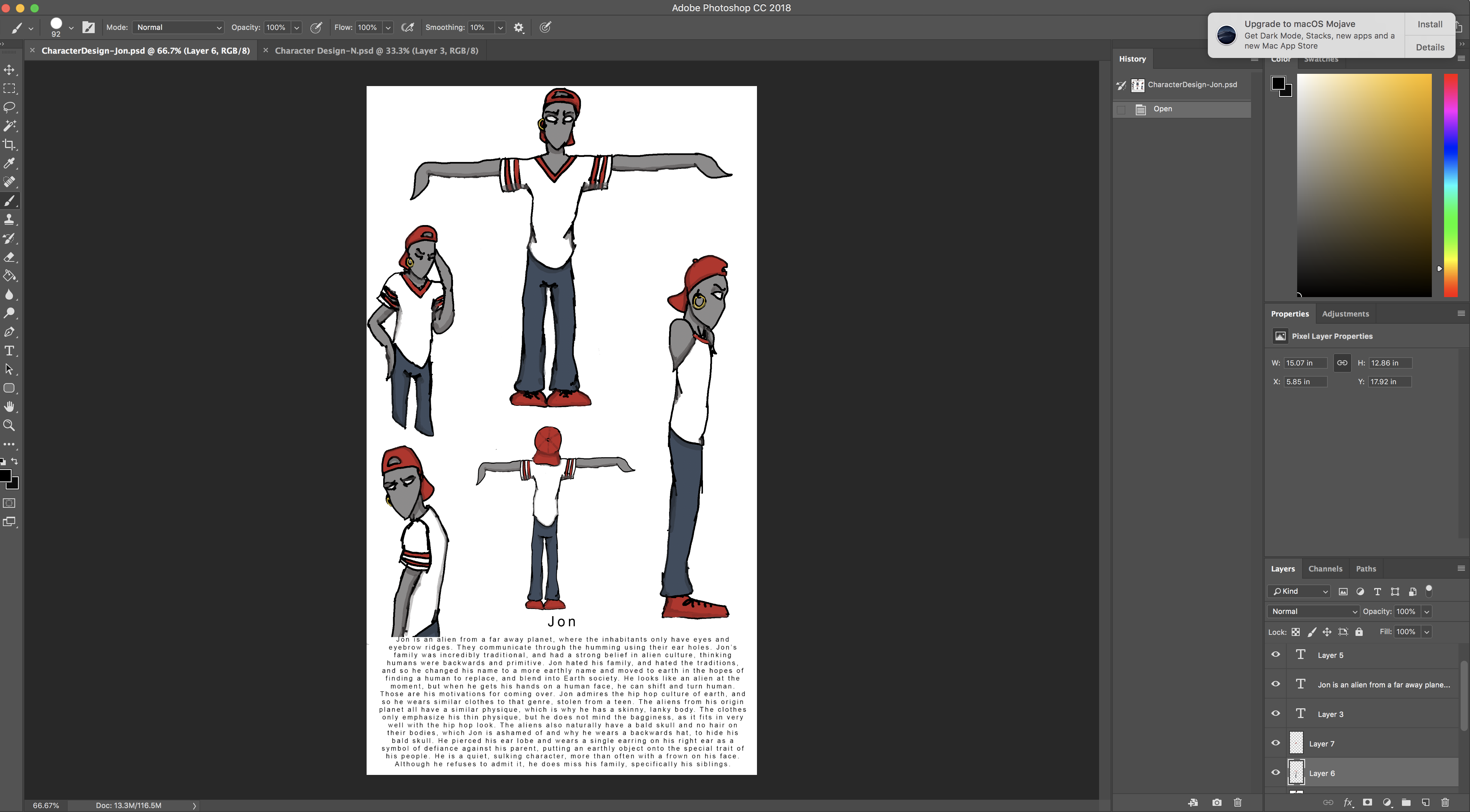
Mood Scene:
After finishing the character design and biographies, groups started to build sets, and my group and I were able to finish the UFO crash site. We took pictures of the set in different lighting and using contrast and low/high keys, in the efforts to portray a certain feeling, and I went for a more bright, happy setting, and a more mysterious lighting. Then, we learned about the key elements of a walk cycle, and drew the characters walking with their own personalities emphasized in the walk. One of the walk cycles was made using Photoshop(Jon) and the other in Adobe Animate(N). After finishing these walk cycles, the whole thing was put together in Adobe After Effects, with the photographs on a layer and the walk cycles on top of it on another layer.
It was difficult to incorporate low/high contrast, and low/high key for me, since it was a very complex subject for me to grasp. I edited the photos in Photoshop using opacity brush methods I learned earlier in Digital Media, to make the contrast and the colors salient, and really pop out. I thought it would help convey the emotion better. Building the set was an interesting experience since there was thought put into the design and how to create the world our characters were in. As for the animations themselves, it was very intriguing to become familiar with the different things that go into a walk cycle, including the key poses and in betweens, as well as how varying certain aspects can portray a character’s personality.
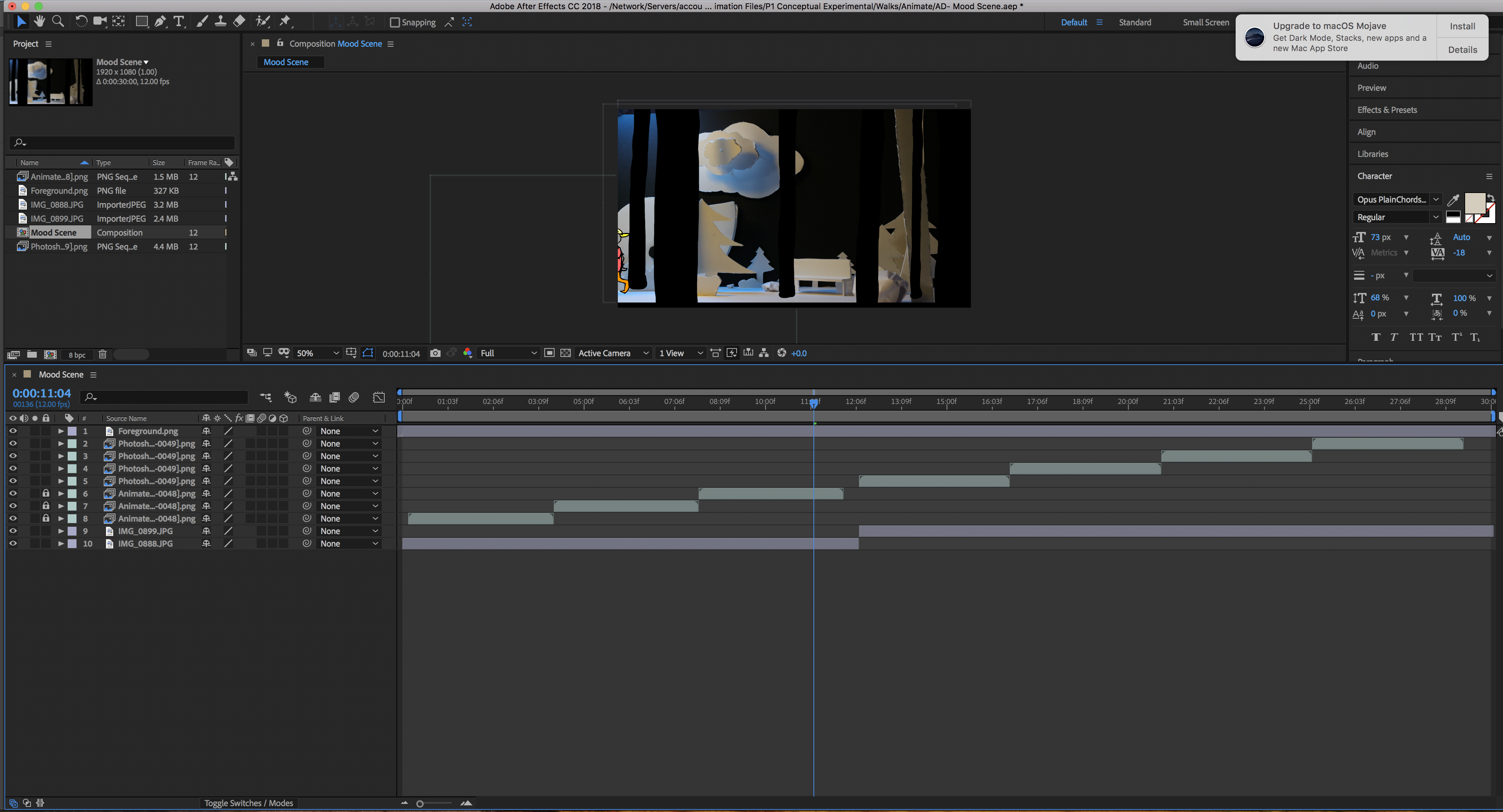
Rotoscope:
First, for the Rotoscope project, we learned about the history of the rotoscope and some background on it, and how it is used. The rotoscope is a method of animation which draws on live footage, where the animators then use for reference and/or trace to create more lifelike movement. There was emphasis on how it should not be a simple tracing frame by frame, but should have a story of its own.
This was a project that helped me learn about realistic motion, and how it is possible to base animation off of that but still keep it loose and exaggerated, or make it into my own. While it is simple to just trace the figure or the actions, it is essential to make sure that it is able to express a unique story.
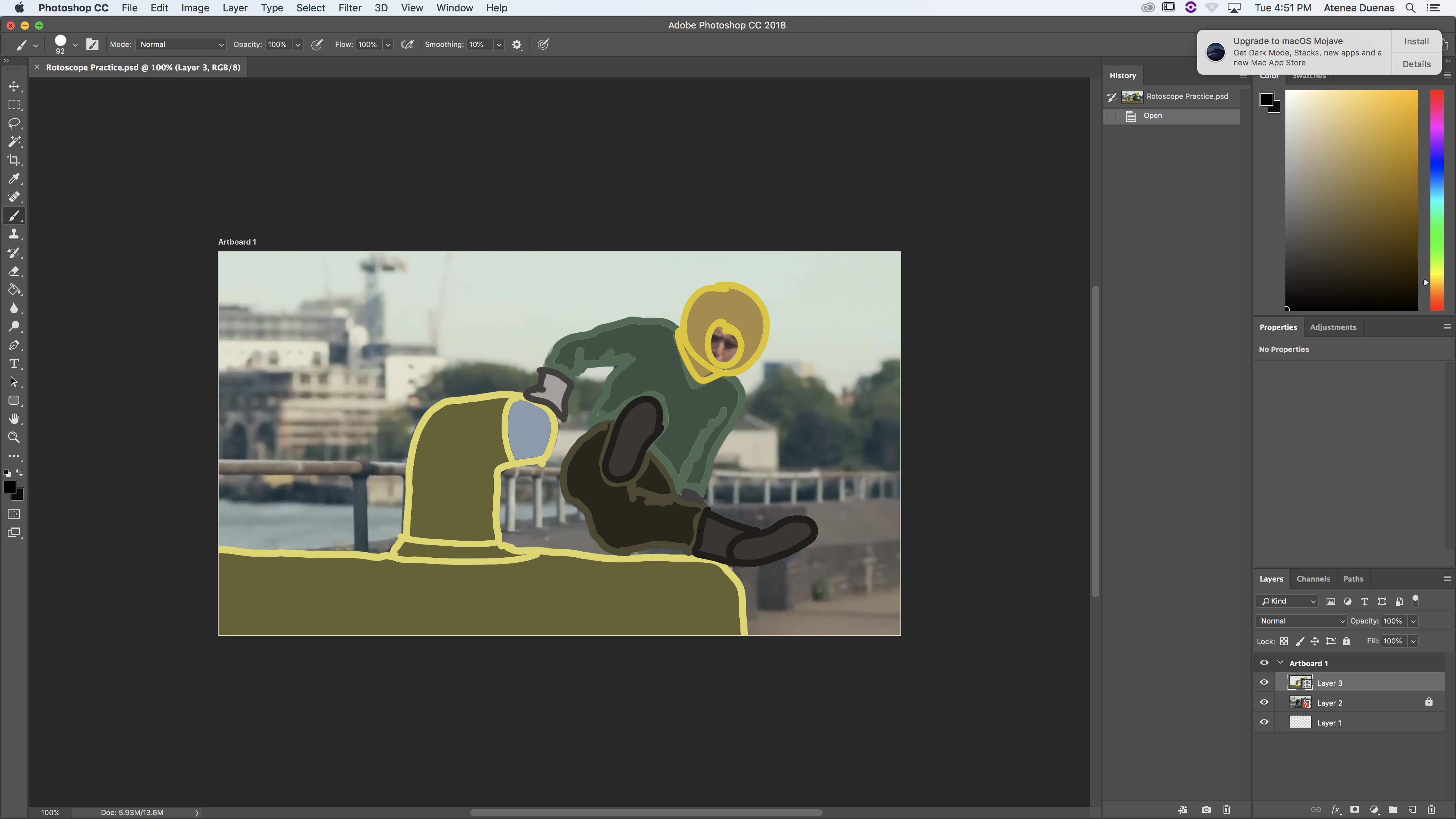
Narrative Film Groups:
My group was with Ilsa Askren and Talia Joffe, and they were great partners as well as contributors. We split the narrative up between the three of us, with focus on the beginning, middle and the end. I took over the ending bit, while Ilsa took over the beginning and Talia did the middle chunk. I was very satisfied with working the ned but a little stressed, since the end is key for our story and I wanted to make sure I communicated the feelings correctly.
My group was very understanding and receptive to ideas, which I very much appreciate. We also took responsibility for our own parts while being supporting of each other. We also had excellent communication between one another. One thing I do wish we did better was coordinating the final pieces of the animation, and putting it all together. It was a little bit towards the eleventh hour, and so I wish we left a little time before the due date to revise and check the final product.
Narrative Concept Design:
After a planning period, the groups had a meeting with the teacher discussing the general plan and direction of the story, offering materials such as concept art, a rough storyboard, color beats and color scheme, and a screenplay. There was a presentation we shared, and we received feedback on it.
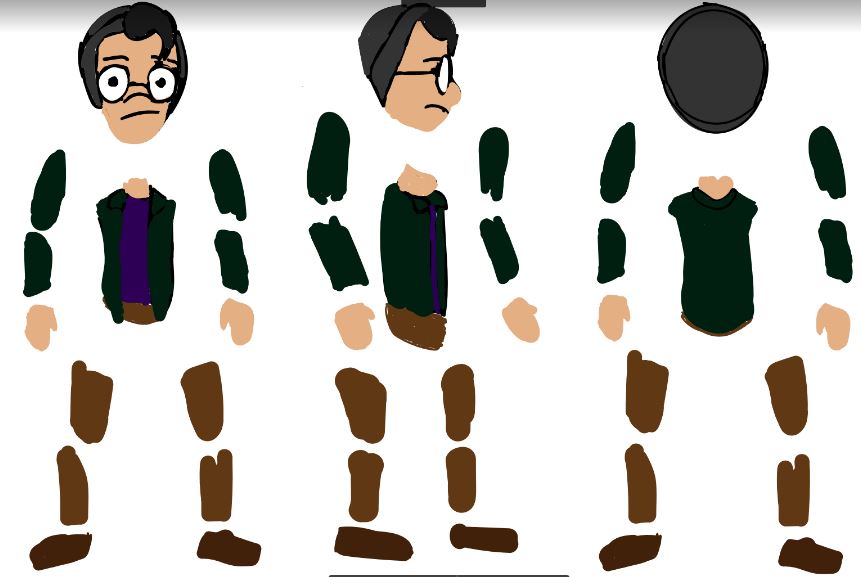
This is a bit of a wake up call, at least for me, since it forced me to actually put the ideas down on paper and realize them, when previously I had just thought about them in my head and just worked them out. It also was a more professional approach to describing the ideas that we had come up with, so that was a new and challenging experience.
Narrative Animation:
Coming up with the idea for the narrative animation was surprisingly simple, since we took Ilsa’s idea for a narrative she wrote and put a spin on it. We all helped with the crafting, where we all took in ideas. We came up with the concept and the story. The remaining task was to manufacture it. We were to follow a schedule encouraged to us by our teacher. However, we were a little late in the process since we had so many other assignments, in and out of animation. We had to choose our priorities, and in doing so, the animation was left until later to finish. It all came together in the end, and we managed to accomplish all the tasks.
I can safely say that I felt really passionate with this project, which was very helpful in encouraging my work ethic, I wanted to see this idea succeed, and watch it come into fruition. It was an amazing process from start to finish, and while made difficult at times due to work outside the animation class and deadlines, working through the stress is an experience that I will not forget. I learned a bit about managing my time, and setting up schedules. In the end I was pretty happy with all the effort I put in, and was content with the culmination of all the ideas.
